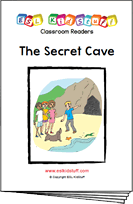Places in my town lesson plan
Stand-alone lesson ESL kids lesson plan
Lesson plans for ESL kids teachers

Places in my town
In this lesson students talk about places in their town using the present continuous with the structures “Where are you going?” & “I’m going to~”. The lesson includes a great song and classroom reader.
Members get accompanying flashcards, worksheets, song and classroom reader.
Download materials:
Our lesson plans are FREE!
Sign up for accompanying:
✔ worksheets
✔ homework sheets
✔ craft sheets
✔ flashcards
✔ song downloads & videos
✔ classroom readers & videos
Click to see lesson details, materials and supplies
Time: 40 mins – 1 hour
Objectives:
– Talking about places in your town.
– Using the present continuous with the structures “Where are you going?” & “I’m going to~”.
Structures: “Where are you going?”, “Where are you going right now?”, “I’m going to~”, “Over here”.
Target vocabulary: school, the park, the shops, the beach, my friend’s house, the station, the zoo, home.
Review vocabulary: on foot, by bus, by bicycle, by car, by train, by boat, by airplane, by rocket.
Lesson materials
Flashcards:
- school, the park, the shops, the beach, my friend’s house, the station, the zoo, home
Printables:
- Where are you going? board game (blown up to A3 size, if possible)
- Where are you going? write worksheet
- Reader worksheet
- Where are you going? song poster
Songs:
- Where are you going?
Readers:
- Where’s mother?
Additional materials:
- Places in my town vocab crossword
- Places in my town vocab word search
- Places in my town worksheet
Supplies:
- [hide_on_uk]colored[/hide_on_uk][hide_on_us]coloured[/hide_on_us] pencils
- dice (enough for each group of 3 or 4 (see point 6 below)
- board with marker / chalk
- device to play the song on
This is a nice easy lesson which introduces students to different places in their town and uses the present continuous to ask and answer questions.
IMPORTANT: This lesson should be taught after the Transport and travel lesson as it uses the transportation vocabulary from that lesson.
Lesson procedure:
Warm up and maintenance:
The beginning of your lesson is extremely important: this is where you set the tone of your lesson and get everyone in the right frame of mind for learning English. It is also an opportunity to check homework and review previous lessons.
Click for warm up suggestions for the start of your lessons
These activities can be done in the following order at the start of your lesson:

1. Greetings and name tags
Greet the students by name as they enter the classroom and gesture for them to sit down. Before class prepare some blank name tags (stickers or pin-on tags). Give these out and have everyone write their names and put their tags on. If you use pin-on tags, you can keep and give out every class.

2. Homework check
Check each student’s homework set in the last lesson. Ask each student some questions about their homework worksheet (e.g. “what [hide_on_uk]color[/hide_on_uk][hide_on_us]colour[/hide_on_us] is it?”), give lots of praise, and then put some kind of mark on the homework sheet (e.g. a sticker, a stamp or draw a smiley face). Finally, tell your students to put their homework back into their bags.
3. Review past lessons
Reviewing past lessons is very important – students need constant practice of new vocab, structures, songs, games and so on. Always review parts of your last lesson as well as some parts from other previous lessons. You can spend 5-10 minutes reviewing – it’s fine to recycle games and activities from your past lessons to review as kids enjoy playing familiar games (although be careful not to play a game to death!). See the section “Other ideas to include in your warm” below for ideas.
You can also include review activities in the main body of your lesson. Kids can have short attention spans so it’s good to be able to pull out lots of activities during different stages of the lesson.
Other ideas to include in your warm up:
Ball pass questions
This is good to review questions from previous lessons. Get everybody standing in a circle.
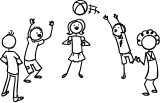
Round 1:
Take a ball and hold it and say, “My name is (you name)”. Then throw the ball to one student and say, “What’s your name?”. Students throw the ball around randomly, saying their names and asking for names.
Round 2:
This time ask a review question, e.g. “How many tables are there?”. Then throw the ball to a student who should answer, “There are (6) tables”. Help if necessary. Then that student throws the ball to another student and asks a “How many …?” question. Continue so everyone has a go. You can have multiple rounds with different topic questions.

Play “Spin the bottle”
Sit students in a circle with a bottle in the middle. Teacher spins the bottle. When it stops spinning the student it is pointing to has to answer a question. If the answer is correct then that student can spin the bottle. This is a good class warm up activity (e.g. How are you? What’s your [hide_on_uk]favorite[/hide_on_uk][hide_on_us]favourite[/hide_on_us] food? How’s the weather today?, etc.
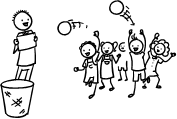
Play “Vocabulary basketball”
This is a fun game which reviews vocabulary from previous lessons. You will need a basket (a trash can) and 2 balls (or 2 pieces of A4 paper scrunched up into balls).
Form 2 teams and line them up so that two players from each team are facing the front with the basket in front of them. Let both players throw their ball – if they get their ball into the basket they can try and win a point by giving the correct answer to a question the teacher asks. This can be an actual question (e.g. What are you wearing?) or a flashcard (What’s this?). Then they go to the back of the line. At the end, the team with the most points is the winner!
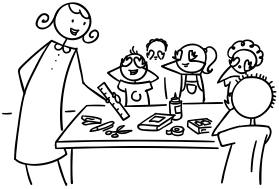
Play “What’s missing?”
This is a fun review memory game – students will have to try to remember review objects from previous lessons (e.g. classroom stationery). Lay the objects out on a table for all to see. Allow the students a minute to memorize the positions of the objects. Remove an object and hold it behind your back. Say, “Open your eyes!” – the first student who can shout out the missing object wins a point for his/her team. Play for all the objects.
Finally, calculate which team has won the most points and give them a round of applause.

Play “Quiz game show”
This is a fun quiz game, like a simple version of a TV game show. Draw some circles on the board and randomly write numbers 1, 2 or 3 in each circle. These will be points.
Put students into teams. Then ask the first team to choose a number – 1 is an easy question (e.g. “Do you like bananas?”) and 3 is a difficult question (e.g. point at a clock and ask, “What time is it?”). 2 will be in between in terms of difficulty. When the question has been answered correctly, erase that number circle. Play until all the number circles are gone – the team with the most points is the winner!
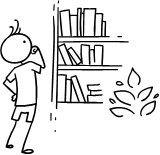
Read a classroom reader again
As you progress through the lessons you will start to build up a catalog of classroom readers (see our Readers download page at https://www.eslkidstuff.com). Kids love going back to old stories and reading through them again. Invite a student to pick a classroom reader and read through it as a class. Make the story as interactive as possible by asking questions (e.g. what [hide_on_uk]colors[/hide_on_uk][hide_on_us]colours[/hide_on_us] there are, the names of different objects, etc.) and getting students to speculate what is going to happen next in the story.

Talk about the weather (do after you have taught the weather lesson plan).
- Prepare a weather board. Before the first class prepare a piece of cardboard and cover it with felt – you are going to pin this to the wall. If you can, try and get blue felt (to represent the sky). Write at the top in large letters, “How’s the weather today?”. Below that write “Today it’s”. Cut out weather pictures (such as our weather flashcards) and stick some velcro on the back. Arrange the weather pictures around the edge of the board and then put the board on the wall of your classroom. You can now use this weather board at the beginning of every lesson.
- Ask about the weather. Ask, “How’s the weather today?” and have students put up their hands. Allow one weather condition per student (e.g. “It’s rainy”) and have each student come up and put a weather picture on the weather board.
- Introduce more weather vocabulary. Depending on weather conditions, you can introduce more weather words (with pictures … you can get students to draw them), such as:
- stormy
- misty
- showery
- freezing
- humid
- frosty
- icy
- drizzly
New learning and practice:
1. Play the “Snake follow” game
This lesson starts in a really fun way. Get everyone to line up behind the teacher. Get everyone to shout, “Where are you going?” and on that prompt the teacher shouts back, “Over here!” – then start walking to a different part of the classroom, with everyone following in a line behind you (like a snake).
Keep doing this as you snake your way around the classroom at different speeds. Other students can also have a go at being the head of the snake.

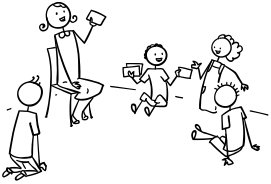
2. Introduce the vocabulary
Before class prepare the flashcards for the different places in the song: school, the park, the shops, the beach, my friend’s house, the station, the zoo, home.
Hold up each flashcard and elicit / teach the word. Have students pass each flashcard around the class with each student saying the word as s/he passes the card.
3. Play “Flashcard slam” and “Missing flashcard”
First play “Flashcard slam”: lay all the flashcards, picture up, on the floor and get everyone to sit around the cards in a circle (for large groups, have a few sets of flashcards so you can do this in groups). Teacher says, “Touch the station!” and everyone must quickly slam their hand down on the correct card. Play this until every card has been practiced.
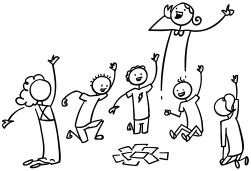
Then play “Missing flashcard”: with the cards all laid out on the floor, tell everyone to close their eyes. Then the teacher takes away one card. Say, “Open your eyes!” and everyone must shout out the missing card. Continue to play with other missing cards until all vocab has been practiced.
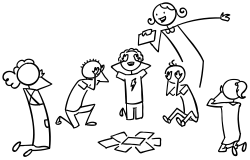
4. Play the “I’m going to…” game
You’ll need two sets of the places flashcards for this game, which practices the key structures “Where are you going?” and “I’m going to …”.
Get everyone to close their eyes as you place each card from the first set around the room (e.g. place the zoo card in the corner, the park card under a desk, etc.). Next, tell everyone to open their eyes. Give a card (e.g. zoo) from the second set to a student. Have the following conversation (model):

Teacher: “Where are you going?”
Student: “I’m going to the zoo”
Teacher: “Ok then. Goodbye”
Student: “Goodbye”
The student must then search for the zoo flashcard. When s/he finds it s/he can return to you for another card. As the first student is searching, give another card (e.g. the beach) to another student and have the same conversation. Eventually, you will have students searching all over the place and returning for another card – it’ll be a bit hectic but great fun – plus the key structures are being practiced.
If you have already taught the Transport and travel lesson you can add an extra element to the short conversation as a review, as shown below:
Teacher: “Where are you going?”
Student: “I’m going to the zoo”
Teacher: “How are you going there?”
Student: “I’m going (e.g. by bus, by car, by bicycle, by rocket, on foot, etc.)”
Teacher: “Ok then. Goodbye”
Student: “Goodbye”
The student then searches for the card acting out the transport (e.g. steering the wheel of a car, zooming like a rocket, etc.). Each time the student searches s/he must use a new means of transport.
5. Sing the “Where are you going?” song
Put the places flashcards on the board in the order of the song (or put up the song poster). Get everyone to stand up and show them the gestures (see below). Then run through the song a few times.
Lyrics for “Where are you going?”
Chorus:
Where are you going?
Where are you going?
Where are you going right now?
Verse 1:
I’m going to school,
I’m going to the park,
I’m going to the shops,
I’m going to the beach.
Chorus:
Where are you going?
Where are you going?
Where are you going right now?
Verse 2:
I’m going to my friend’s house,
I’m going to the station,
I’m going to the zoo,
I’m going home.
Gestures for “Where are you going?”
The gestures are very simple and fun:
- during the chorus everyone does the ‘question gesture’ (both palms up, looking quizzical) whilst swaying in time with the music.
- during the verses everyone either walks around the classroom or walks on the spot – in time with the music.

[hide_on_uk]Short sample (members get full-length song):
[/hide_on_uk]
[hide_on_us]Short sample (members get full-length song):
[/hide_on_us]
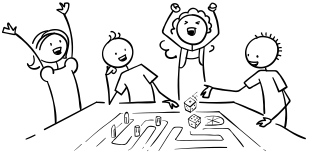
6. Play the “Where are you going? board game“
This is a great board game to play in groups of 2-4 players. Put the class onto groups and give out the boards and game cards (you’ll need to print and cut out before the lesson). If you can blow up the size of the game board to A3 when you copy (if not, A4 size is fine).
Each group needs a die and each player a small counter (pen tops, etc., will do.). Then explain the rules and model how to play the game (the rules are on the worksheet). Then let everyone play. As they are playing, walk around and help out and make sure the structures are being used.
7. Read classroom reader “Where’s mother?”
Let’s finish the lesson with a nice story which uses the target vocabulary. Before class, download and print off the reader “Where’s mother?”. As you read through the story, point to the pictures and elicit the different place the bird flies over. Ask questions about the features of each location, for example:
Teacher: (pointing to the picture on page 4) Where is Tessa flying over?
Students: A park!
Teacher: A park? Why do you think so? What can you see?
Students: Trees, grass and a pond.
Teacher: Ok, let’s check .. (reading) .. “Tessa flies over the park”. Yes, you are right! Good job!
etc.
Get the students really involved in the story by asking lots of questions about the features of each place. You can ask follow up questions about the features of the places in the students’ neighborhoods, such as:
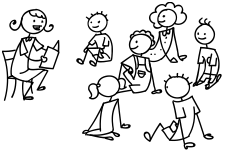
Teacher: (pointing to the picture on page 4) Does your park have trees, grass and a pond, Ken?
Student: It has trees and grass but not a pond.
Teacher: Good! What else does your park have in it, Ken?
Student: Swings and a cafe.
Teacher: That sounds like a nice park! How about your local park Mary? What does your park have in it? etc.
Alternatively, watch our video version of the reader (Internet connection required).
Wrap up:
Assign homework: “Where are you going? write” worksheet
Click for wrap up suggestions for the end of your lessons

1. Assign homework
Each week give out a homework worksheet for your students to take home. Hold up the homework worksheet and model how to do it. Give out the worksheets and say, “Put your homework in your bags”.

2. Do “Quick check”
Time to leave the class. Make sure everything is put away and the students have gathered their belongings. Have them line up at the door and place yourself between the door and the students. For each student check one new word or phrase, for example:
- hold up an object or flashcard (such as an item of clothing) and ask, “What’s this?”
- ask a question from the lesson (e.g. “Where do you live?”, “Do you like bananas?”, “Can you play chess?”, etc.)
When they give you the correct answer say goodbye and let them leave. If their answer is wrong, have them go back to the end of the line – they will have to try again once they reach the front!
Other lesson plans
Actions, verbs & tenses:
- Can – for ability
- Morning routines
- Daily routines & times of the day
- Actions – Present continuous
- Future plans using “going to”
- Past tense activities – Regular verbs
- Past tense activities – Irregular verbs: Part 1
- Past tense activities – Irregular verbs: Part 2
Adjectives:
- Describing people
- Describing things
- Comparing things (Comparative adjectives)
- Comparing things (Superlative adjectives)
Adverbs:
Alphabet:
Animals:
Body:
Classroom:
Clothes:
Colors:
Colours:
Directions:
Family:
Feelings & emotions:
Food:
Health & sickness:
Holidays & festivals:
Jobs:
Likes, dislikes & favorites:
Likes, dislikes & favourites:
- Likes & dislikes
- [hide_on_uk]Favorites[/hide_on_uk][hide_on_us]Favourites[/hide_on_us] and asking why
Nature & Our world:
Numbers:
Places & where we live:
Prepositions of location:
Pronouns:
Shapes:
Shopping:
Sports:
Time, days, months, seasons:
Toys:
Transport & travel:
Weather:





